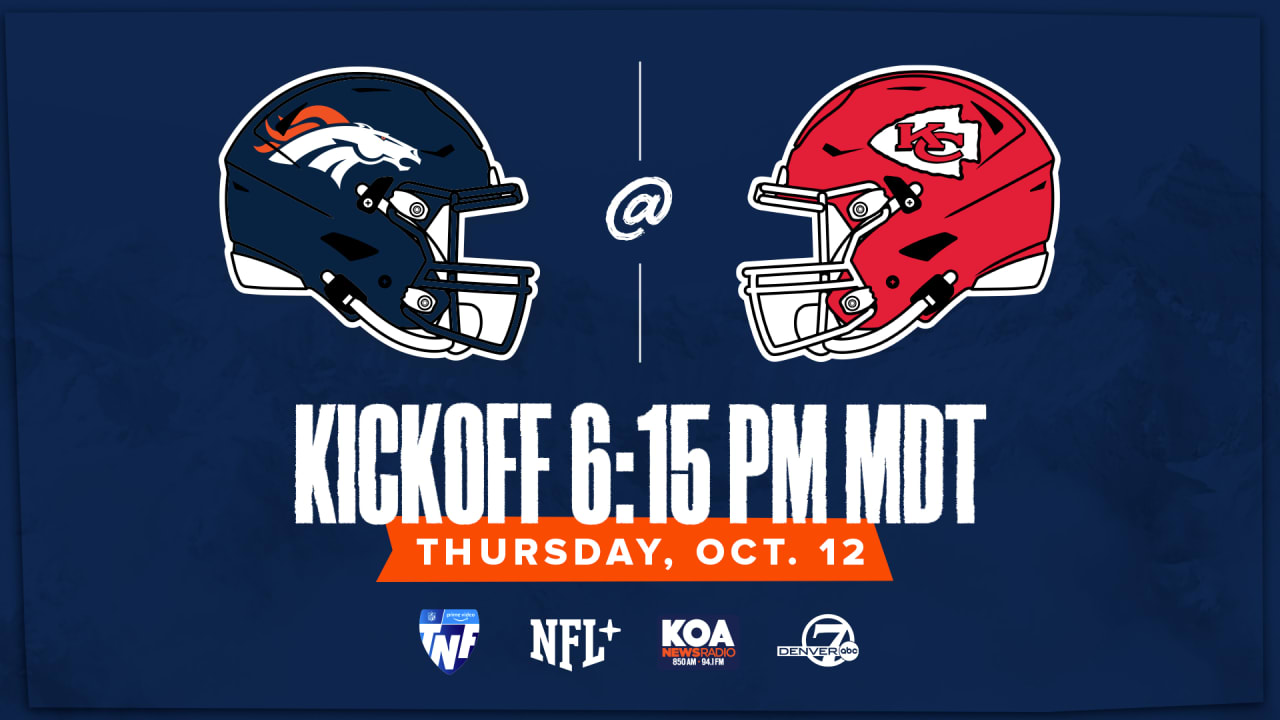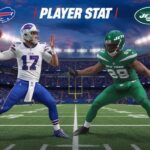Introduction
When it comes to riveting NFL matchups, few rivalries capture the spirit and intensity of the game like the ongoing clash between the Denver Broncos and the Kansas City Chiefs. These two teams have a storied history, marked by memorable plays, outstanding athleticism, and a competitive spirit that ignites the excitement of football fans everywhere. In this analysis, we’ll dive deep into the player statistics that not only illuminate past performances but also help predict future outcomes. From quarterback duels to defensive showdowns, understanding these stats provides a comprehensive view of what to expect in their upcoming encounters.
Historical Context
Denver Broncos vs. Kansas City Chiefs: A Storied Rivalry
The Broncos-Chiefs rivalry is a testament to NFL excitement, featuring a long history of close games, playoff implications, and individual heroics. Historically, both teams have had their share of victories and crushing defeats, contributing to a rich narrative that adds an extra layer of anticipation to every meeting. For instance, the dramatic 1997 matchup where the Broncos edged out the Chiefs in a nail-biter helped Denver on their path to a Super Bowl victory, showcasing the high stakes often at play. Analyzing player performances from such games not only highlights key players but also sets the stage for future matchups, where past heroes can either defend their legacies or seek redemption.
Key Player Statistics

Quarterbacks: Head-to-Head
In the realm of the NFL, quarterbacks often dictate the pace and outcome of the game. Current season stats such as touchdowns, completions, and interceptions are crucial for predicting how each quarterback might perform in the upcoming game. For example, the Chiefs’ quarterback, with his quick release and sharp accuracy, has historically put up impressive numbers against the Broncos’ defense. Comparatively, Denver’s quarterback, known for his resilience under pressure, has consistently demonstrated the ability to orchestrate late-game comebacks, adding a layer of unpredictability and excitement to the face-off.
Running Backs: Ground Game Analysis
The running game remains a fundamental aspect of both teams’ strategies. Analyzing the rushing yards, attempts, and touchdowns provides insights into how each team might control the game’s tempo. For instance, the Chiefs’ running backs often excel in speed and agility, making sharp cuts and explosive plays. On the other side, the Broncos’ runners have been more about power and endurance, wearing down defenses and managing the clock effectively in tight games. This clash of styles provides a fascinating subplot to the overall game strategy, impacting not only the yards gained but also the physical tone of the game.
Wide Receivers and Tight Ends: Catching the Advantage
Receivers are pivotal in any game plan, and their ability to alter a game’s course with just a single catch is unmatched. Statistics such as receptions, receiving yards, and scoring are critical. The Chiefs’ tight end, known for his route-running prowess and reliability, particularly in clutch situations, often becomes a key target in tight games. Conversely, the Broncos’ wide receivers, with their speed and ability to gain yards after the catch, pose a significant threat to any defense. This matchup of air superiority will likely dictate which team gains the upper hand in the passing game.
Defensive Standouts: Sacks and Interceptions
Defense often wins championships, and in this rivalry, defensive stats like sacks and interceptions tell a story of dominance and resilience. The Broncos’ defensive lineup, renowned for its aggressive pass rush, can change the momentum of the game by putting pressure on the quarterback. Meanwhile, the Chiefs’ secondary, skilled in reading the quarterback’s eyes, has a knack for crucial interceptions that can turn a game on its head. These elements will be key in determining which team can better disrupt their opponent’s offensive rhythm.
Special Teams and Game-Changing Plays
Special teams play can often be the unsung hero of NFL games. Field goals, punting averages, and return yards not only reflect a team’s preparation and discipline but also their ability to capitalize on opportunities. Historical plays, like a game-winning field goal or a punt returned for a touchdown, have been pivotal in past Broncos-Chiefs matchups, and revisiting these moments can provide a blueprint for future successes.
Player Matchup Highlights
As we look forward to the next Broncos vs. Chiefs game, certain players are expected to shine. The spotlight will be on those who have historically performed well against the opposing team, as well as newcomers who are poised to make a mark. These matchups not only add a layer of excitement but also strategic depth to the game planning.
Predictions Based on Stats
Given the current season’s trends and the detailed player stats analysis, predictions lean slightly in favor of the team whose players have shown consistency and peak performance at critical moments. However, in football, any given Sunday can produce unexpected heroes and dramatic shifts in game dynamics.
Conclusion
In conclusion, the player statistics of the Denver Broncos and Kansas City Chiefs provide a fascinating lens through which to view their rivalry. By examining these stats, fans and analysts alike can gain deeper insights into what to expect in their upcoming encounters. As both teams continue to evolve, keeping an eye on these statistics will be crucial in understanding and predicting future game outcomes.
FAQs
1. Who are the key players to watch in the next Broncos vs. Chiefs game?
Key players to watch include the quarterbacks, as they dictate the pace of the game. The Chiefs’ quarterback is known for his elite passing ability, while the Broncos’ quarterback can make big plays under pressure. Additionally, standout wide receivers, tight ends, and defensive players on both teams will play crucial roles in deciding the game’s outcome.
2. How do player stats influence game predictions?
Player stats help in identifying strengths and weaknesses in key areas such as passing, rushing, and defense. They provide insights into past performances, allowing analysts to predict which team may have an advantage. Metrics such as completion percentages, rushing yards per game, and defensive takeaways are crucial in evaluating potential game outcomes.
3. What historical player performances have notably influenced past games?
Several past matchups between the Broncos and Chiefs have been decided by individual heroics. Quarterbacks have led fourth-quarter comebacks, defensive players have recorded crucial sacks, and wide receivers have made game-winning catches. For instance, past matchups have seen legendary performances where a single player turned the tide of the game.
4. Can past player stats predict the outcome of future games?
While past performance is a strong indicator of potential outcomes, it’s not a guaranteed predictor. Factors such as injuries, weather conditions, and team strategy changes can alter the game’s course. However, analyzing past stats does provide a solid foundation for understanding team strengths and weaknesses.
5. What are the most important stats to look at before a Broncos vs. Chiefs matchup?
Some of the most important stats include quarterback passer ratings, rushing yards per game, red zone efficiency, turnover differentials, and defensive pressure stats like sacks and interceptions. These numbers highlight which team has an edge in critical game situations.
6. How have changes in team lineups affected the rivalry in recent years?
Changes in team rosters, such as new quarterback acquisitions, key trades, or injuries, have significantly impacted the rivalry. For example, when the Chiefs upgraded their offensive line or the Broncos revamped their defense, these changes directly influenced game strategies and results.
7. How do the Broncos and Chiefs typically match up defensively?
Defensively, the Broncos have often relied on their aggressive pass rush and strong secondary play, while the Chiefs have focused on opportunistic turnovers and strategic blitz packages. The battle between these defensive units often plays a crucial role in determining the winner.
8. What role does coaching play in the Broncos vs. Chiefs rivalry?
Coaching plays a major role in game preparation and execution. The Chiefs’ offensive schemes have been innovative and high-powered, while the Broncos have historically leaned on a strong defense and methodical offensive approach. Play-calling, adjustments, and in-game strategy shifts can be game-changers.
9. How do home and away performances impact this matchup?
Historically, home-field advantage has played a significant role, with teams performing better in their home stadiums. Factors such as crowd noise, weather conditions, and travel fatigue affect both teams differently, sometimes influencing key moments in the game.
10. What impact does the running game have in deciding these matchups?
A strong running game helps control possession time, keeping the opposing offense off the field. The Broncos, when successful, use their ground attack to dominate time-of-possession battles, whereas the Chiefs often utilize a more balanced approach between rushing and passing. Effective rushing can open up the passing game and relieve pressure on quarterbacks.
11. How do turnovers influence the outcome of the game?
Turnovers can be game-defining moments, as they provide teams with short-field opportunities to score. A team that wins the turnover battle usually has a greater chance of winning. Both teams’ defenses will aim to force fumbles and interceptions, making ball security a critical factor.
12. What is the biggest factor in determining the winner of a Broncos vs. Chiefs game?
While many aspects contribute to a victory, quarterback performance, defensive pressure, turnover margin, and red zone efficiency are among the most significant. The team that excels in these areas is more likely to emerge victorious in the rivalry matchup.
You May Also Read:https://buzzinfodaily.com/76ers-vs-phoenix-suns-match-player-stats/


